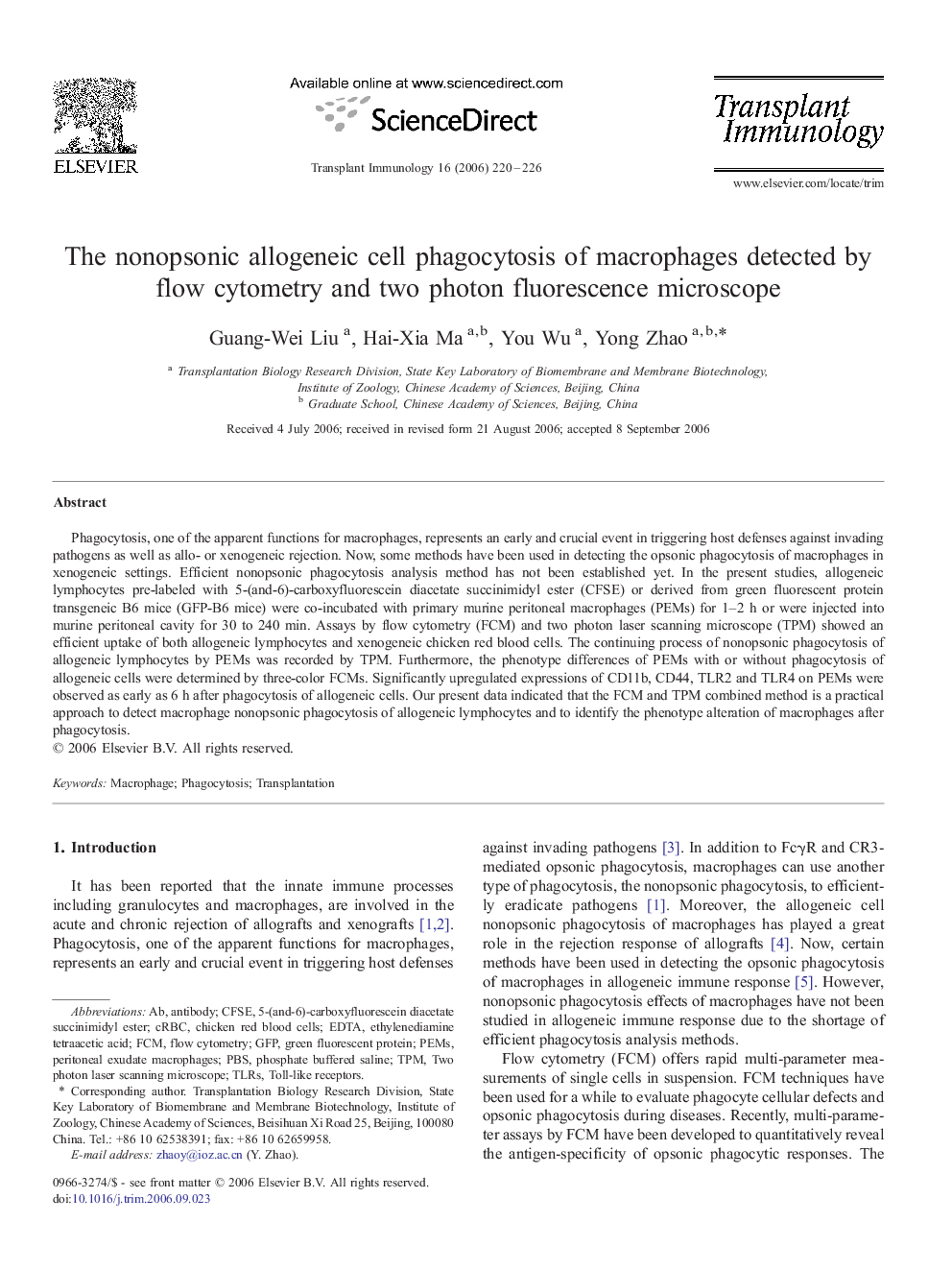| Article ID | Journal | Published Year | Pages | File Type |
|---|---|---|---|---|
| 3392599 | Transplant Immunology | 2006 | 7 Pages |
Phagocytosis, one of the apparent functions for macrophages, represents an early and crucial event in triggering host defenses against invading pathogens as well as allo- or xenogeneic rejection. Now, some methods have been used in detecting the opsonic phagocytosis of macrophages in xenogeneic settings. Efficient nonopsonic phagocytosis analysis method has not been established yet. In the present studies, allogeneic lymphocytes pre-labeled with 5-(and-6)-carboxyfluorescein diacetate succinimidyl ester (CFSE) or derived from green fluorescent protein transgeneic B6 mice (GFP-B6 mice) were co-incubated with primary murine peritoneal macrophages (PEMs) for 1–2 h or were injected into murine peritoneal cavity for 30 to 240 min. Assays by flow cytometry (FCM) and two photon laser scanning microscope (TPM) showed an efficient uptake of both allogeneic lymphocytes and xenogeneic chicken red blood cells. The continuing process of nonopsonic phagocytosis of allogeneic lymphocytes by PEMs was recorded by TPM. Furthermore, the phenotype differences of PEMs with or without phagocytosis of allogeneic cells were determined by three-color FCMs. Significantly upregulated expressions of CD11b, CD44, TLR2 and TLR4 on PEMs were observed as early as 6 h after phagocytosis of allogeneic cells. Our present data indicated that the FCM and TPM combined method is a practical approach to detect macrophage nonopsonic phagocytosis of allogeneic lymphocytes and to identify the phenotype alteration of macrophages after phagocytosis.
